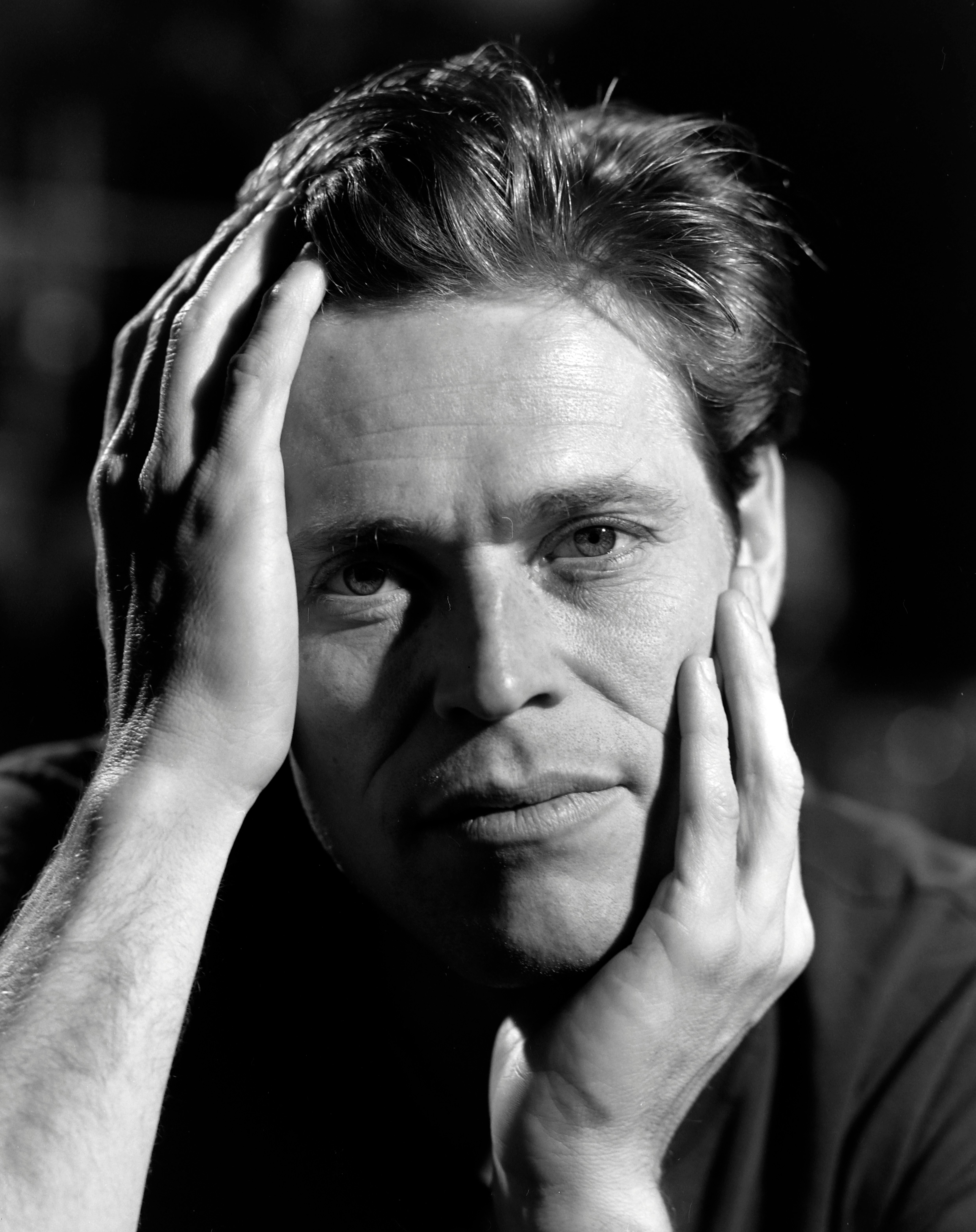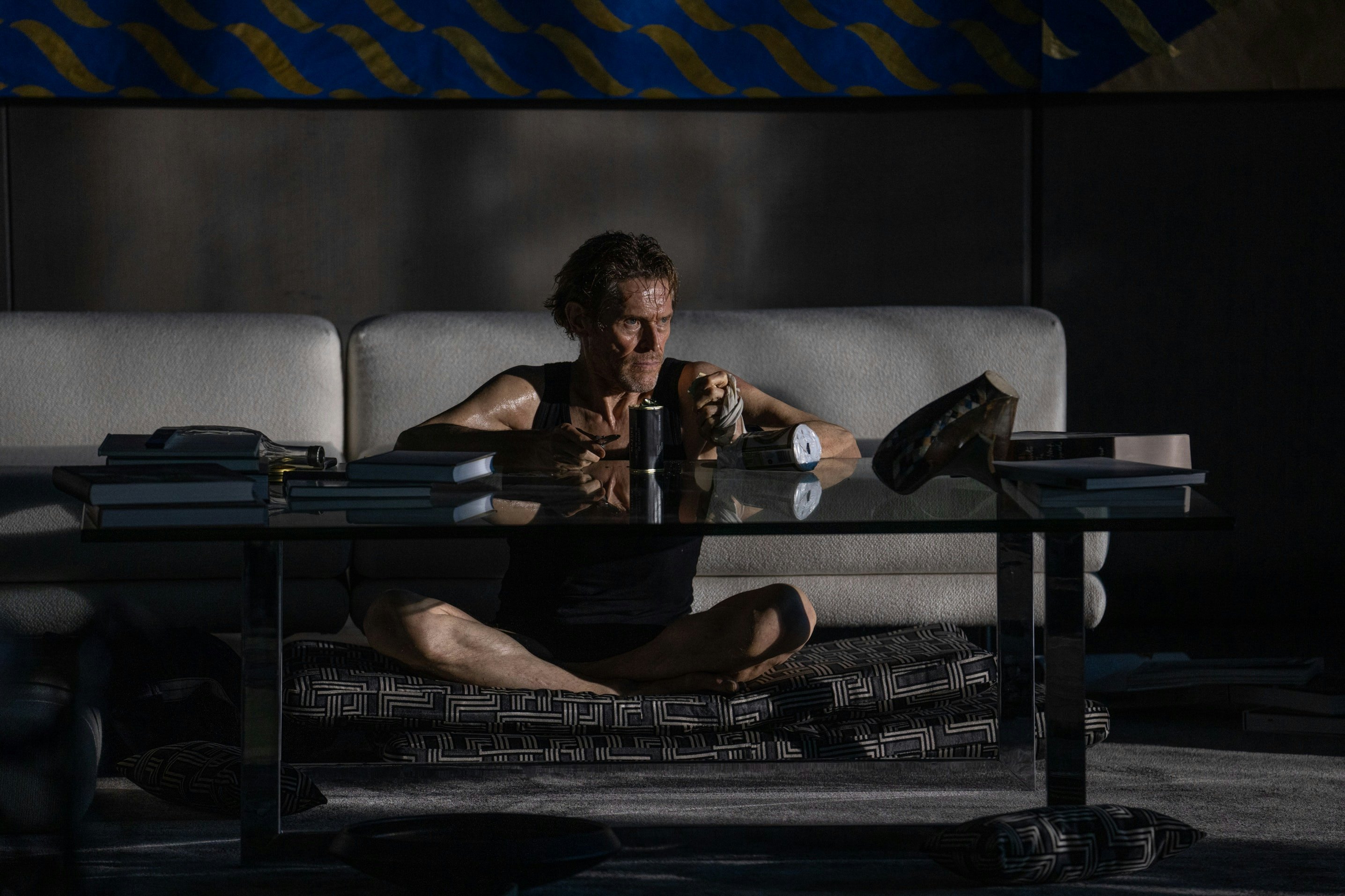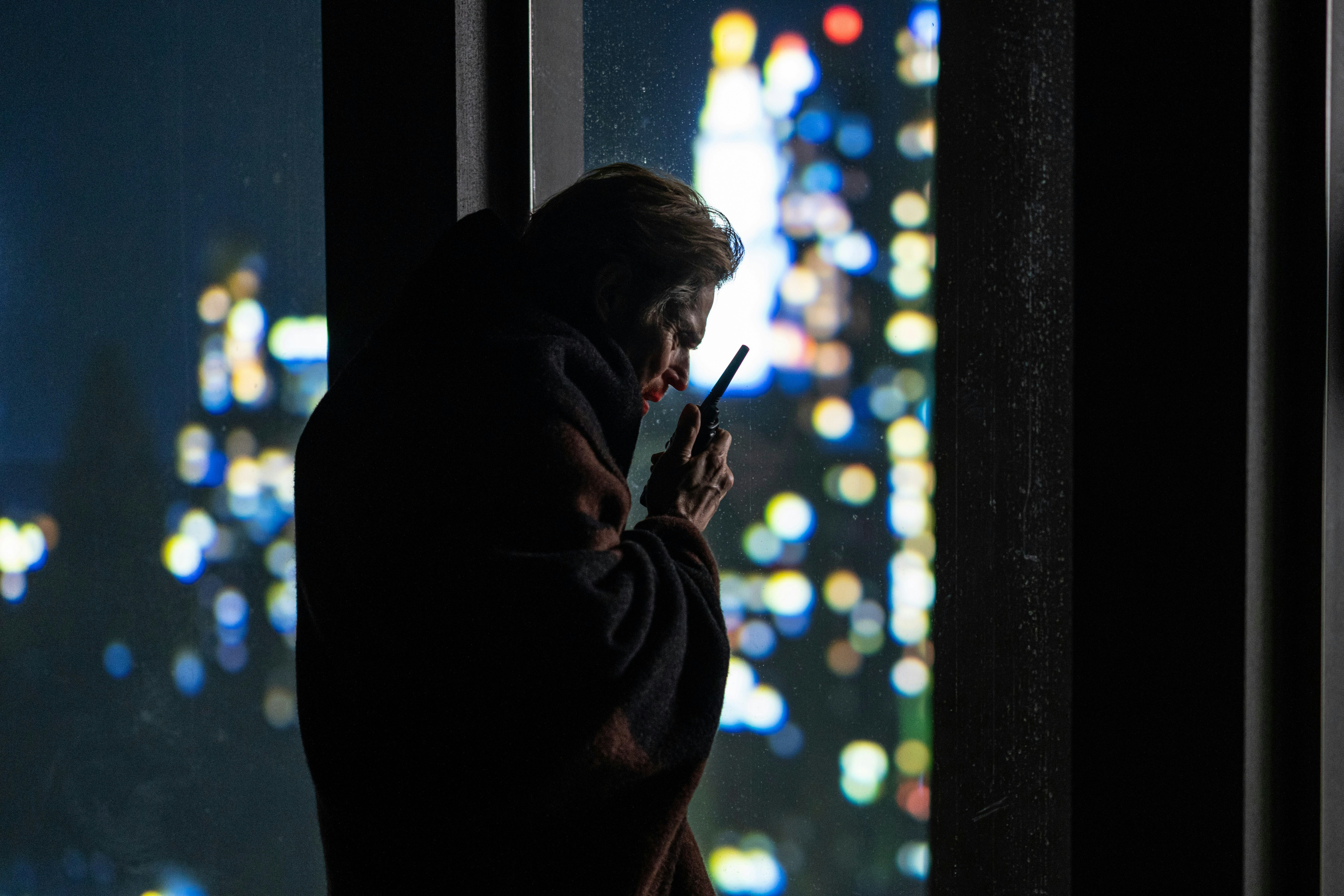
Willem Dafoe once likened acting for a filmmaker to “being their creature,” a comparison that feels fitting to The Lighthouse actor’s reputation for go-for-broke performances. Often cast as the antagonist or a member of an ensemble, going full “creature mode” may have been the best way for Dafoe to make his mark — his big, bulging eyes and uncannily angular features popping amid any cast. So what happens when you unleash Dafoe in a single, contained space, in front of first-time feature director Vasilis Katsoupis’ camera on Inside? You get one of Dafoe’s most impressive acting displays in years. And it’s not just because he had to eat dog food.
“You go a step at a time, scene by scene, obstacle by obstacle,” Dafoe tells Inverse. “But it was great fun, because with that kind of expansive role, shooting in chronological order, you could really go quite deeply into the role and you could relax into it, and have it work on you.”

Dafoe appears to be anything but relaxed in Inside, a relentlessly brutal psychological thriller that follows an art thief, Nemo, as he gets trapped inside a luxury penthouse that becomes a unique torture chamber. The fridge is empty except for a few cans of caviar. The water isn’t running except for sprinklers that go off every so often for the small jungle’s worth of plants. The thermometer breaks in his escape attempt, causing the heat to rise to unbearable levels before dropping to near-freezing. And all this while Dafoe’s Nemo is surrounded by priceless works of art.
It’s the kind of ironic juxtaposition of capitalism, art, and suffering that’s become the commentary du jour in recent satirical films. But for Dafoe, Inside’s single location and singular focus — that of a man’s survival in a beautiful modernist apartment — is what sets it apart from the rest.
“There's a beauty in this film for me, that there's a very strong narrative,” Dafoe says. “The man's trapped in this luxury apartment, he's got to find ways to survive. That's a very strong line.”
Nemo resorts to everything from eating the exotic fish in the apartment’s fish tank, to the aforementioned dog food. When his sanity truly begins to slip, he begins to maniacally perform his own talk shows to himself — the kind of dual performance that the Spider-Man actor is quite familiar with, having recently reprised the role of the Green Goblin in 2021’s No Way Home (for the record, Dafoe says he would play Norman Osborn again “if everything was right”). It’s all in service of a greater message that takes the saying “No man is an island” to the extreme.
“We tend to build golden cages.”
The story of Inside was inspired by director Vasilis Katsoupis’ own personal experience staying at a friend’s apartment in lower Manhattan (no, he did not get trapped and starve). Surrounded by towering skyscrapers and sleek buildings that he had never seen before, Katsoupis was awestruck — and slightly terrified.
“It [occurred] to me, What if you were trapped in a luxurious apartment at the top of a building?” Katsoupis recounts. “And afterward, it came to me to take the premise of Robinson Crusoe, Castaway and put it in a place surrounded by life all the time, all the day, like a metropolis like New York. The loneliness that someone feels is elevated, and it's more tortuous than being on a lonely island. A boat will pass by and there’s the chance of escaping the island, but for my hero, he can see the buzz of the city around, but nobody can help him or nobody wants to help him.”
This thought experiment became reality when Katsoupis and his team approached Dafoe in London about starring in the film — a request he never thought would even reach the Hollywood icon.
“He was always a star that I imagined in the film,” Katsoupis says, “But imagine that — me just thinking about Willem being in my first film. That idea was a dream — more than a dream. It was an impossible task.”

But Dafoe was immediately taken with the story, even offering to finance the film. Filming began during the pandemic and wrapped in the summer of 2021. Now, released as Covid-19 appears to be on its last legs, Inside also feels like a pointed glimpse at a unique moment in history, though Dafoe hopes their experiences weren’t quite as extreme as Nemo’s.
“Definitely people are going to be able to relate to it because they've been through that pandemic experience,” Dafoe says. “But this is quite different, actually. Because in the pandemic, it was a collective experience. We were all going through the same thing. And even though we were isolated, we knew next door, across town, across the ocean, people were basically going through the same thing. So there's some sort of comfort in that.”
There’s little comfort in watching Inside, which has a certain voyeuristic quality to it. It draws the viewer in — they’re fascinated by Nemo’s suffering, repulsed by it, upset by it. “The audience really participates in that as if it were a thriller,” Dafoe says.
But Inside is more than just a thriller about watching a man slowly starve to death, Dafoe believes. The art that surrounds Nemo is not just an ironic display of capitalist decadence at its worst. Nemo loves the art — and it helps him survive as much as it taunts him. “Because of the special qualities of the apartment, the art being there, other things come up,” Dafoe says. “So there's also a meditative quality and certain things really are evoked in him dealing with the art and eventually, first practically out of boredom, he starts to interact with the art and then actually, I think by the end, it's something that maybe even saves him.”
To Katsoupis, the message of Inside is simple: “We tend to build golden cages.”







